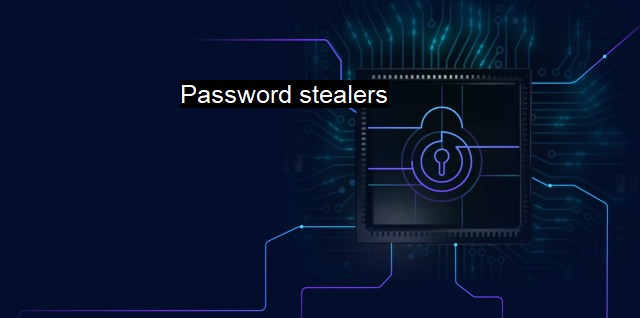What are Password stealers?
Understanding Password Stealers: Methods and Implications for Cybersecurity
Password stealers, as the term implies, are malicious programs or sequences of codes created by hackers with the intention to capture and exploit the passwords stored in individuals' computers or networks, hence violating their account's security or privacy. These are devices designed to exploit vulnerabilities in cybersecurity systems and protocols, prevalent in the attorney unseen layers of our daily internet endeavors.In the continuously progressing context of cybersecurity, password stealers pose significant hazards. Institutions around the globe, from multinational organizations to governmental departments, depend profoundly on passwords for system access protection. An effective password stealer won't notify its victims about the breach, operating covertly to extract as much information as possible before the intrusion could be detected.
Password stealers execute this objective through several methods, one of which is keystroke recording. The stolen information can comprise email accounts, online banking credentials, credit card numbers, or whatever information the hacker is eyeing for. Once a user enters their login credentials, the stealer records every single keystroke and transfers these data to the attacker. Depending on which specific strategy is used, this can be realized swiftly, within minutes, or over an extended duration.
Password stealers can employ a so-called "form-grabbing" system that logs the data entered into preset categories like username and password fields on internet forms. Sometimes these trackers are embedded as malicious scripts in official-looking web pages luring unsuspecting victims.
Password attackers often deploy a technique called 'clipboard monitoring,' where data copied to the clipboard while conducting financial transactions, like transferring digital currency or copying banking details, are gathered and disclosed.
Password stealers can also pry passwords and credentials stored in browsers or specific applications. Attackers often employ this ploy as most users incline to save passwords within browsers for convenience in use, facilitating an easy loot for the password stealer tool.
The invasion of password stealers signifies a frank violation of privacy that might have serious repercussions. In this omnipresent digital era where finance meets cybersecurity, the risk of incurring substantial financial losses is substantially high.
To defend against password stealers, there are a variety of steps that users can take, the foremost is to install and regularly upgrade a robust antivirus program. Antivirus programs often come prepackaged with heuristics for detecting malware, such as password stealers, by their behavior, rather than using a signature-based approach which may be ineffective against new or unknown threats.
Always maintain the operating system with its most recent patches and updates. Avoid following links in untrusted e-mails or clicking on dubious web sources. Regularly alter passwords and enable two-factor authentication, ensuring complexities found in passwords.
Users can also undergo awareness training for cybersecurity. Organizations can provide resources and training sessions for their employees to secure proprietary information from password stealers. Individuals can educate themselves about phishing mails, the prevalence of Trojan horses, and the hazards of inadvertently downloading malicious software.
Despite being amidst the hazardous entities circulating the cyberspace, the adversity generated by password stealers could be well combated with the right preventive measures and cybersecurity savvy. By keeping yourself informed and using effective antivirus software, your digital environment can indeed become a safer place, hardened to invasions, eavesdroppers, and digital plunderers alike.

Password stealers FAQs
What is a password stealer?
A password stealer is a type of malicious software that is designed to steal user login credentials, such as usernames and passwords, from a victim’s computer or mobile device.How do password stealers work?
Password stealers work by secretly installing themselves onto a victim’s device when the user clicks on a malicious link or downloads an infected file. Once installed, they can capture login credentials from web browsers, email clients, and other applications. Some password stealers even have the ability to take screenshots or record keystrokes to gain access to sensitive information.How can I protect myself from password stealers?
To protect yourself from password stealers, it is important to have a strong antivirus program installed on your device. You should also avoid clicking on suspicious links or downloading files from untrusted sources. Additionally, you should use unique passwords for each of your accounts and enable two-factor authentication whenever possible.What should I do if I suspect my passwords have been stolen?
If you suspect that your passwords have been stolen, you should immediately change your passwords for all of your accounts. You should also scan your device with an antivirus program to remove any malicious software that may have been installed. If you have any concerns about your cybersecurity, you should consult with a cybersecurity professional to assess your situation and implement appropriate measures to protect your data.| | A | | | B | | | C | | | D | | | E | | | F | | | G | | | H | | | I | | | J | | | K | | | L | | | M | |
| | N | | | O | | | P | | | Q | | | R | | | S | | | T | | | U | | | V | | | W | | | X | | | Y | | | Z | |
| | 1 | | | 2 | | | 3 | | | 4 | | | 7 | | | 8 | | |||||||